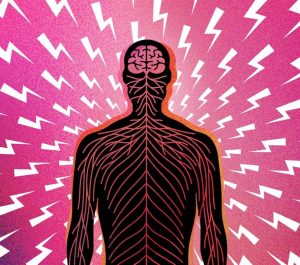Pain is a signal in your nervous system that something may be wrong. It is an unpleasant feeling, such as a prick, tingle, sting, burn, or ache. Pain may be sharp or dull. It may come and go, or it may be constant.
Pain types do differ. There are 3 widely accepted pain types relevant for musculoskeletal pain:
- Nociceptive pain (including nociceptive inflammatory pain)
- Neuropathic pain
- Nociplastic pain
It is not uncommon to have a “mix” of pain types. Current research suggests that understanding pain types is important because it may influence what pain management treatments are best for you.
Your pain management is never decided just on pain type, but this can be an important factor in considering what pain treatments and care are best suited to your problem.
Nociceptive Inflammatory Pain
Once there has been tissue damage, it is normal to have an inflammatory response, and this is a good thing. Inflammation is a coordinated body system response that is designed to help heal the tissue damage. The inflammatory response involves a variety of chemicals talking to each other to help coordinate tissue repair.
Examples of nociceptive pain include acute injuries like a sprained ankle, acute low back pain or neck pain, broken bones, or pulled muscles. There may be signs of tissue injury such as swelling, redness and later purple or yellowing of the skin, a limb that looks distorted, or just increased sensitivity to touch and movement.
Neuropathic Pain
Neuropathic pain is pain associated with injury or disease of nerve tissue. People often get this type of pain when they have shingles, sciatica, a radiculopathy, or diabetic neuropathy.
Neuropathic pain is often described as burning, shooting, stabbing, prickling, electric shock-like pain, with hypersensitivity to touch, movement, hot and cold and pressure. When you have neuropathic pain, even a very light touch or gentle movement can be very painful.
If you have neuropathic pain, it is important to get the right treatment as early as possible, and in some cases, this may mean use of medicines
Nociplastic Pain
Nociplastic pain is defined as ‘Pain that arises from altered nociception despite no clear evidence of actual or threatened tissue damage causing the activation of peripheral nociceptors or evidence for disease or lesion of the somatosensory system causing the pain’.
This type of pain is usually caused by ongoing inflammation and damage of tissues, and it may reflect change in the way the nervous and immune systems function. It can amplify your perception of pain and may be widespread, involving various body parts and tissue.
Other symptoms are common such as fatigue, poor sleep, memory, and low mood. This type of pain is often associated with conditions such as fibromyalgia, chronic pelvic pain, tension-type headaches, or chronic low back pain. This type of pain does not respond to most medicines and usually requires a tailored program of care that involves addressing factors that can contribute to ongoing pain (lifestyle, mood, activity, work, social factors).




